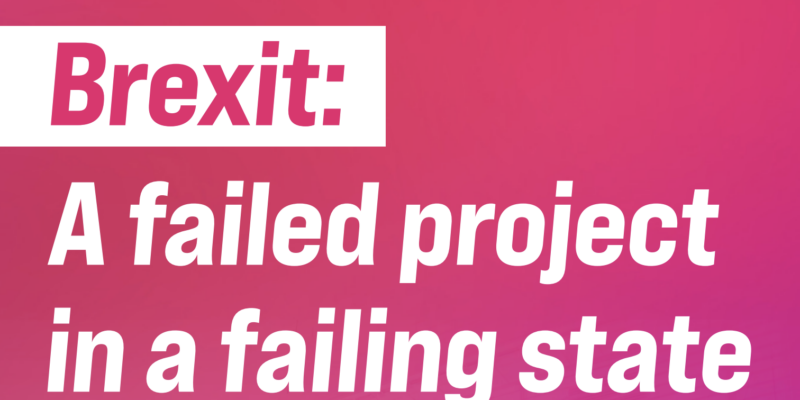60% of England needs ‘levelling up’ – new report
In a guest post for Brexit Spotlight Andrew Pendleton discusses the ‘levelling up’ agenda and what it would need to do in order to be a policy success, not just an election soundbite.
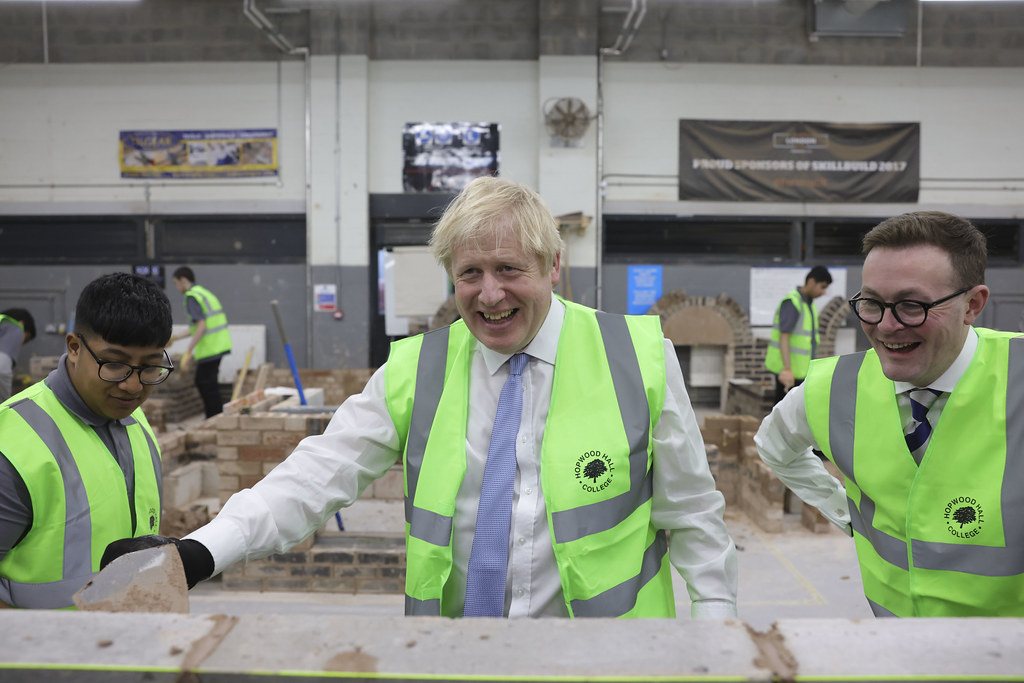
With ‘partygate’ subsuming the premiership of Boris Johnson, it would be easy to mistake the publication of the white paper, Levelling-Up, as a further diversionary tactic. But the agenda of correcting decades of spatial economic inequality in the UK is far too important for that.
The question is does the white paper live up to the enormity of the task?
I have contributed to Closing the Divide, the New Economic Foundation’s timely new report, which attempts to get to grips with the real challenge of levelling-up and provides five yardsticks for those wanting to evaluate the government’s proposal: power decentralisation, move away from growth to living standards, focus on the everyday economy, support small and medium sized enterprises, and shift the focus to greening the economy.
Drawing on analysis of local authority-level data, the report outlines how these are the major shifts that are required if we are really to level up. The key insight is that better-than-average GVA growth (‘gross value added’) is no guarantee of better-than-average household incomes. We can see this by looking at how above average productivity does not always lead to higher incomes (see Figure 1):
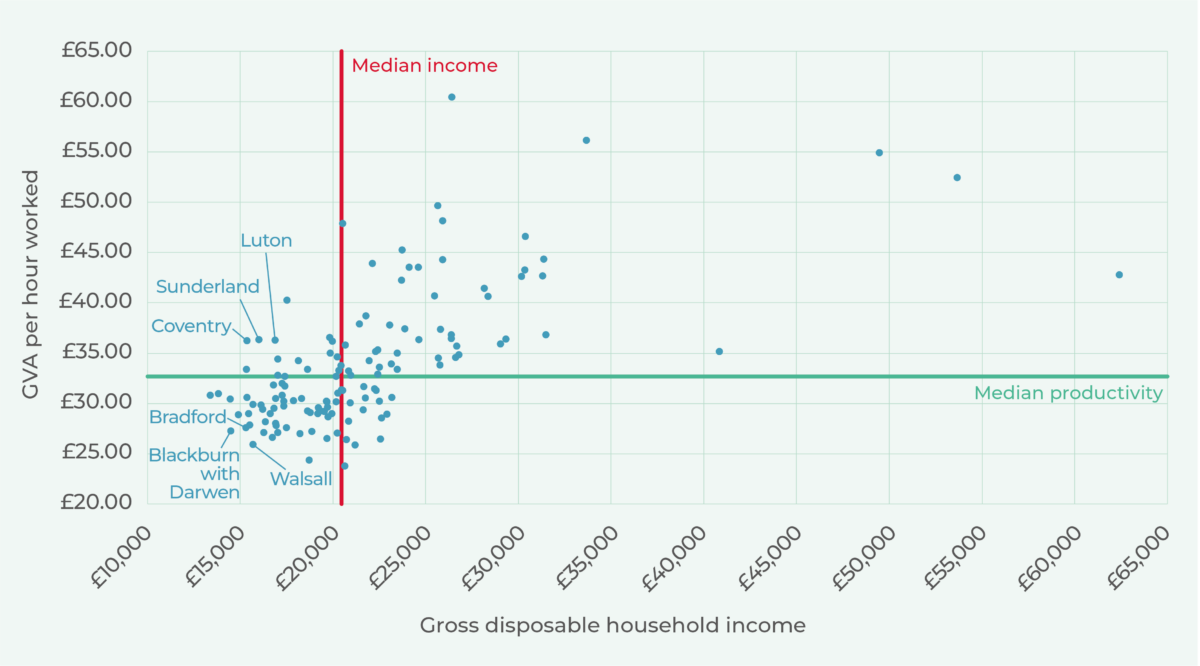
In truth, there is probably very little correlation between the growth in GVA in local authority areas and chronically low household incomes, beyond a high likelihood that places with higher-income neighbourhoods probably do ‘crowd in’ investment.
Importantly, GVA is often portable, because it may be earned in one local authority, but taken home by wealthier workers to better-paid households or captured in London or offshore by owners of capital. In contrast, disposable household income closely equates with standards of living in an area. In short, low household incomes holds places back. This often exists in tandem with other factors such as poor local transport, a lack of community facilities and too few green spaces, which, taken together, create a negative feedback loop undermining local development.
But just as growth is no guarantee of decent household incomes, it also does not automatically improve this kind of community infrastructure. In fact, on the contrary, we found that there’s almost no correlation (figure 2). A higher community needs score indicates poorer social and community infrastructure (see OCSI’s Community Needs Index).
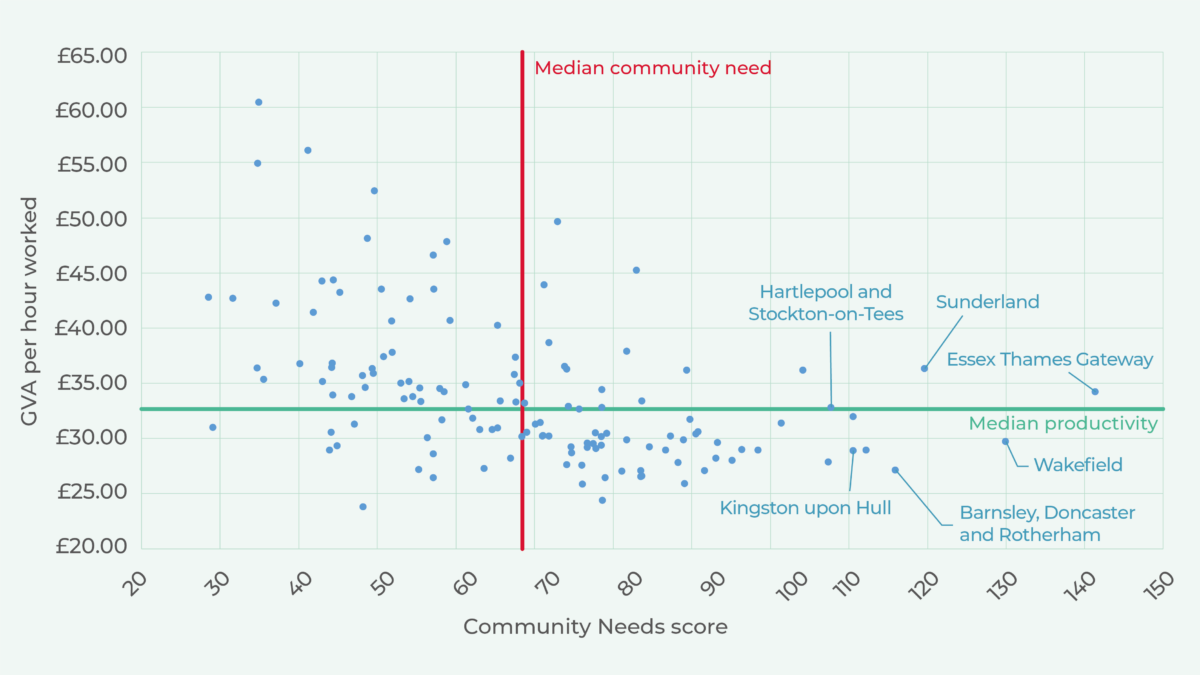
If you put the picture of chronically low household incomes and poor social infrastructure together there are broadly three types of place: (a) those that are relatively prosperous; (b) those in which GVA growth is better-than-average, but household incomes are very low and social infrastructure poor; and (c) those in which growth, incomes and community infrastructure are all poor. More than 60% of local authority areas in England fall into the second two of these categories and are – we argue – in need of levelling-up. This goes well beyond the northern towns typically associated with the agenda. It is most of our big cities, including parts of London (see Table 1).

One important thing to note is that, although there are more local authorities in which growth, incomes and social infrastructure are all poor, there are probably more people living in the ‘disconnected growth’ category, which includes Manchester, Liverpool, Birmingham, Nottingham and other large cities.
Although local authority data is not yet available for the past two years, the suggestion from regional data is that levelling up need has become more acute as a result of the pandemic. This probably would have been worse without the job retention scheme and the initial increase in Universal Credit (UC). But, by extension, it would also be better without the subsequent reversal of the UC increase. Figure 3 shows inequality deepening across regions in the pandemic:
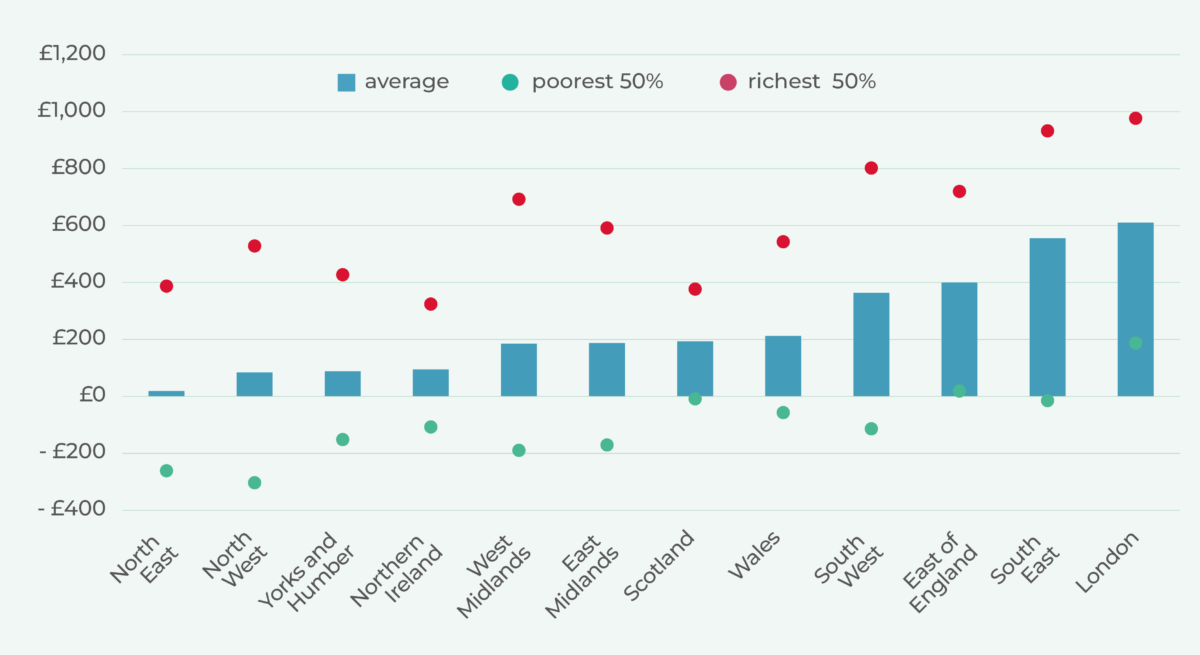
Needless to say, this huge and growing social and economic inequality is taking place at a time of climate emergency and nature crisis. Policy must address both together – though the white paper hardly mentions either climate change or the UK’s catastrophically denuded natural environment. Nor does it mention the fact that many of the places with highest levelling-up need are also host to some of the most polluting industries. Figure 4 shows which places have the highest industrial emissions.
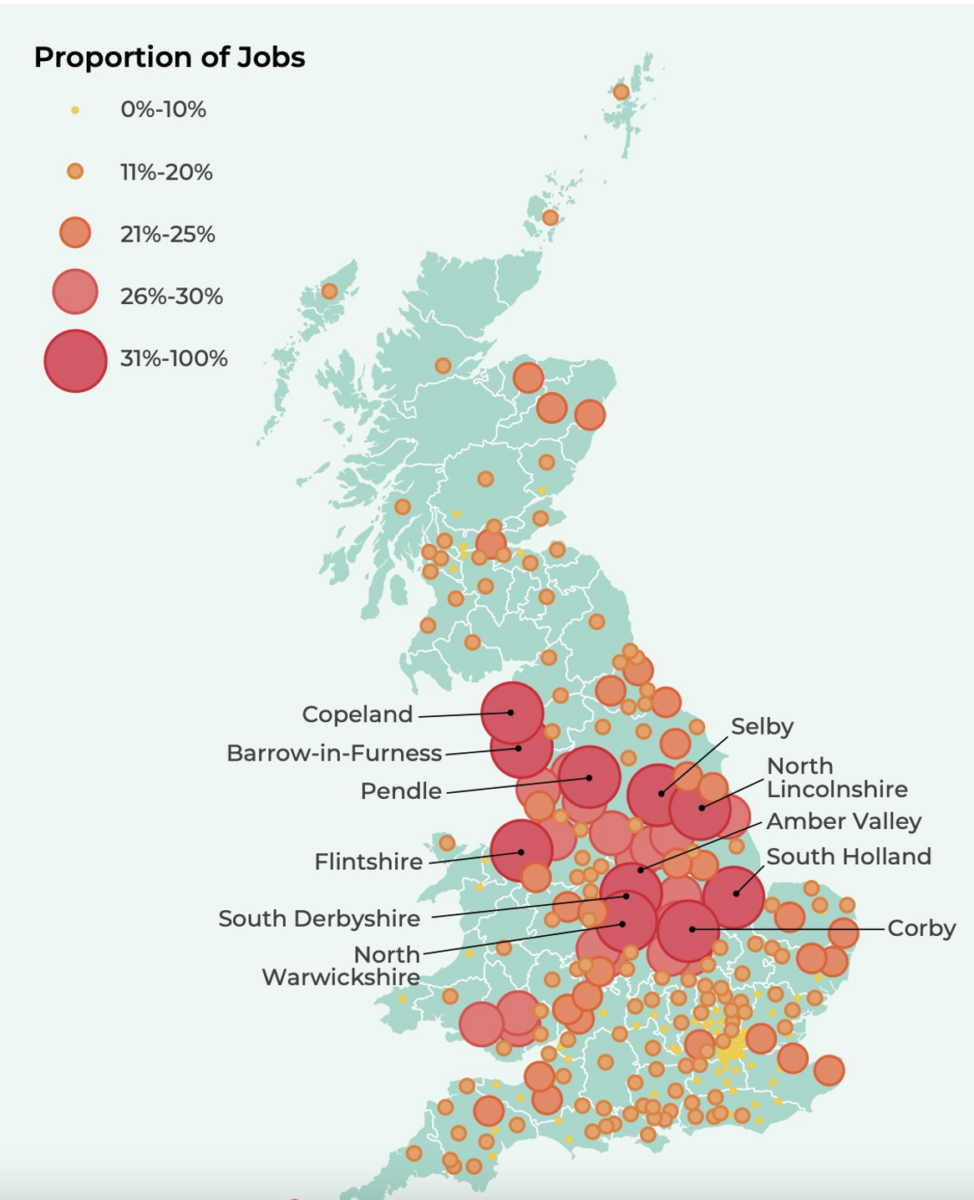
In other words, not only has the rising tide of GVA not lifted anywhere near enough boats, it has also put us all at potentially critical environmental risk. We need to create economic value with much greater efficiency and ensure a good quality of life is possible within the earth’s limits (as Kate Raworth has illustrated with her Donut Economics framing). One important aspect of helping local economies thrive and stopping value haemorrhaging out – as well as keeping us within ecological boundaries – is often called the Foundational or Everyday economy. Pioneered by Karel Williams and Julie Froud (and celebrated by Rachel Reeves, the now shadow chancellor), this includes sectors such as health, social care and housing.
There are two reasons why this everyday economy matters. The first is that all of its sectors are critical to a decent quality of life and many, such as public transport, socially-rented homes and free child and adult social care, act as a social wage to households, supplementing salaries and benefits. The second is that more people work in these sectors than in any of those that are the perpetual focus of government policy, such as manufacturing, technology or life sciences. But these jobs are often poorly paid, insecure and non-unionised.
What this all means is that we need a revolution in economic policy that gets away from the focus on growth, in which the value added mostly flows out of areas and often out of the UK, and focus in on the wellbeing of people living in neighbourhoods that need levelling-up and the planetary resources on which we depend.
Lastly, to facilitate this, we need a parallel revolution in how policy is made – in which people with direct experience are involved and all possible powers are devolved to the most proximate level. This is the report’s number 1 shift. While the government has played-up the devolutionary aspects of the white paper, its paucity of new money and continued fixation with aggregate growth suggests levelling-up is a Whitehall project with its conventional ‘top down’ approach.
February 8, 2022
Brexit Spotlight is run by Another Europe Is Possible. You can support this work by joining us today. The website is a resource to encourage debate and discussion. Published opinions do not necessarily represent those of Another Europe.



